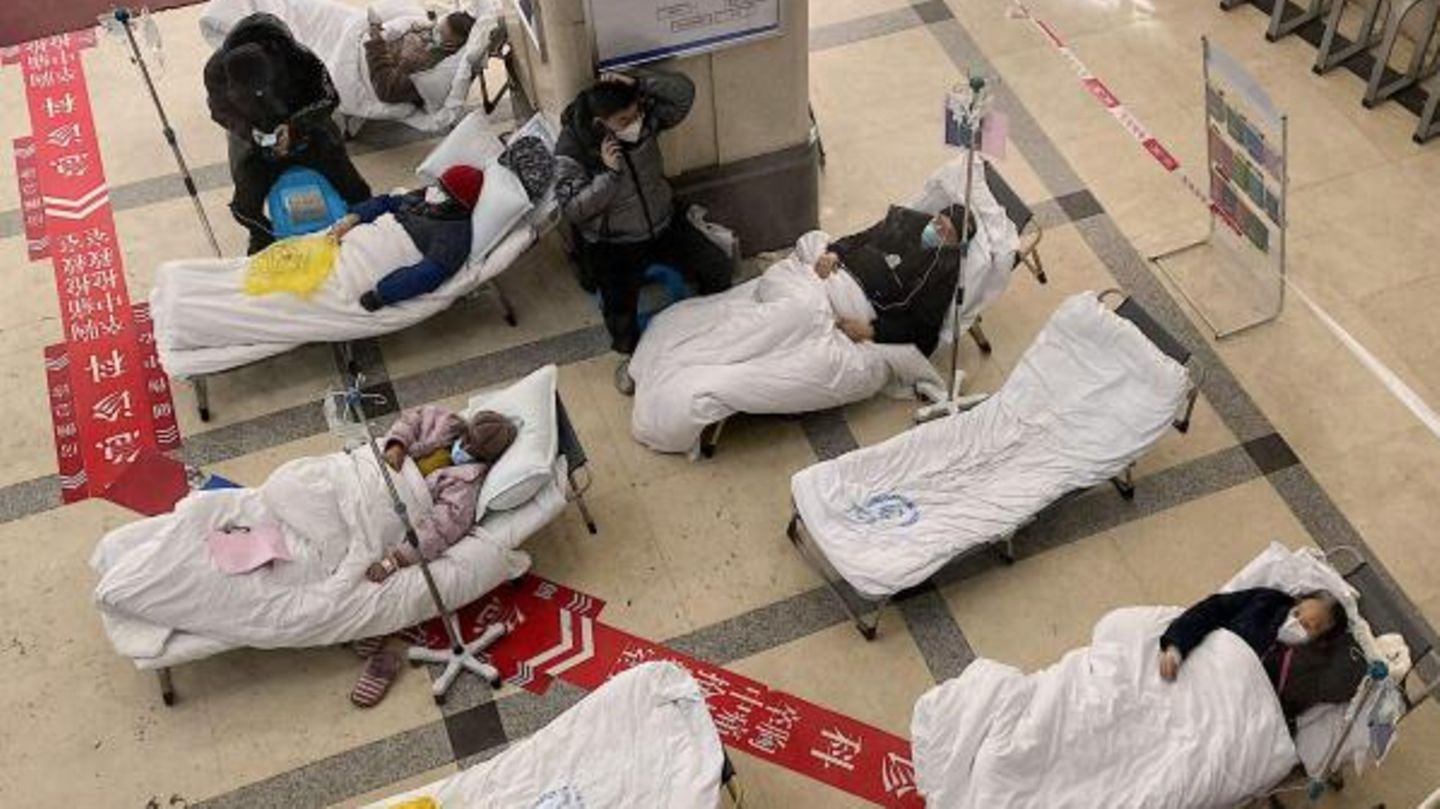Overcrowded clinics, sold-out medicines and crematoria with a waiting list: after the easing, a violent corona wave is pushing China to the limit. But instead of acting, the government prefers to talk up the numbers.
It is a 180 degree turnaround with dramatic consequences. After almost three years of lockdowns, forced quarantines and mass testing, China abandoned its strict zero-Covid policy in early December. The number of infections is now skyrocketing throughout the People’s Republic, with estimates that every second person in the capital Beijing alone is already infected. Many restaurants, shops and banks have closed due to a lack of staff – in contrast, hospitals and crematoria are very busy.
While the government prefers to speak only of a harmless “corona cold”, queues are forming in front of the crematoria in Beijing, which can no longer keep up with the cremation of the dead. “Since the Covid opening, we have been overloaded with work,” an employee describes the situation to the “”. “At the moment it’s 24 hours a day. We can’t keep up.”
Corona wave hits hospitals unprepared
The situation is also dramatic in many hospitals. In Chongqing, a city in the southwest of the country, the No. 5 People’s Hospital can hardly save itself from corona patients. The entrance hall has already been converted into a makeshift Covid station, reports the AFP news agency. Delimited by red and white tape, there are around a dozen beds with mostly older patients, in the adjoining room around 40 other patients are given infusions. Some cough. They all have Covid-19, says a nurse.
The corona wave catches the clinics. Instead of expanding hospitals and creating more intensive care beds, Xi Jinping’s government preferred to build quarantine camps on a large scale. The vaccination campaign was not pushed enough. In particular, the many older people who are considered a risk group are inadequately protected: only 70 percent of those over 60 and 40 percent of people over 80 have received a booster. In the meantime, the last vaccination for many of them was so long ago that the virus hit them hard. In addition, the adapted vaccines from abroad are not permitted in the People’s Republic for political reasons.
The situation on the drug front looks similarly precarious. After the relaxation, in addition to rapid tests, fever and cold medicine were immediately sold out – not a trace of replenishment. “We Chinese are too many,” explains a pharmacist about her empty shelves.
Cautious awakening
China is relaxing the corona rules – and life is slowly returning
China’s 180 degree turn: from zero Covid to zero plan
Meanwhile, the government never tires of saying that the turnaround, or rather “optimization,” as it is euphemistically, came “at the right time.” The pandemic is now “controllable”, it is asserted. The party newspaper “Global Times” speaks of a “better balance between epidemic prevention and social and economic development”.
The difference to the zero-Covid strategy, which was pursued for almost three years, could hardly be more drastic. While just a few weeks ago mass tests, quarantine and contact tracing were part of everyday life for most Chinese, the first metropolises are now allowing those infected to work again. Provided they show no or only mild symptoms.
In view of the seemingly haphazard strategy, many appear on social networks. “There was no preparation for the last three years and suddenly the restrictions are lifted and you can go to work sick – our lives are as worthless as ants,” read a widely liked comment on the Chinese Twitter equivalent Weibo. .
Others even warn against returning to China. “I’ve never had Covid for the past few years living abroad, but I got it a few days after coming back. (…) Everyone I know gets Covid and has a fever – so if you’re in the last Once you leave the country, don’t come back,” writes a user on the popular Xiaohongshu platform.
Falsified Covid death figures
“A return to full normality can be expected in the spring,” the “China Daily” wants to give hope. But before that, three more corona waves will roll through the country, experts predict. The first will mainly hit the cities by mid-January. The second will follow in mid-February, when hundreds of millions of people will traditionally travel to their home villages for the Chinese New Year on January 22nd. With the return of travelers, the third wave of infections is expected by mid-March. In the end, it is estimated that 80 to 90 percent of the 1.4 billion Chinese will be infected with the virus. The Chinese city of Qingdao is currently reporting 500,000 new corona infections – mind you, every day. According to reports from “” and “” in China, 248 million people or 18 percent of the population have been infected with Corona since the beginning of December.
Even if the disease with Omikron is no longer as severe, the country is threatened with several hundred thousand corona deaths, according to the World Health Organization (WHO). Some studies even assume almost a million. The problem: Many of those who died from Covid are because the cause of death is noted as a previous illness. According to the new definition, only those who have died of pneumonia or respiratory failure after an infection are officially reported as corona dead.
: Without knowing the extent of the infections, it is difficult to take appropriate measures, they say. China must learn how such information can be determined more quickly and accurately. The crucial question remains whether there will be enough vaccinations in the next few weeks to cushion the consequences of the omicron spread.
But after almost three years of strict controls, it seems as if the government in Beijing has given up the fight against the virus.
Sources: “”, “”, “”, “”, “”, “”, with DPA and AFP material
Source: Stern
David William is a talented author who has made a name for himself in the world of writing. He is a professional author who writes on a wide range of topics, from general interest to opinion news. David is currently working as a writer at 24 hours worlds where he brings his unique perspective and in-depth research to his articles, making them both informative and engaging.




